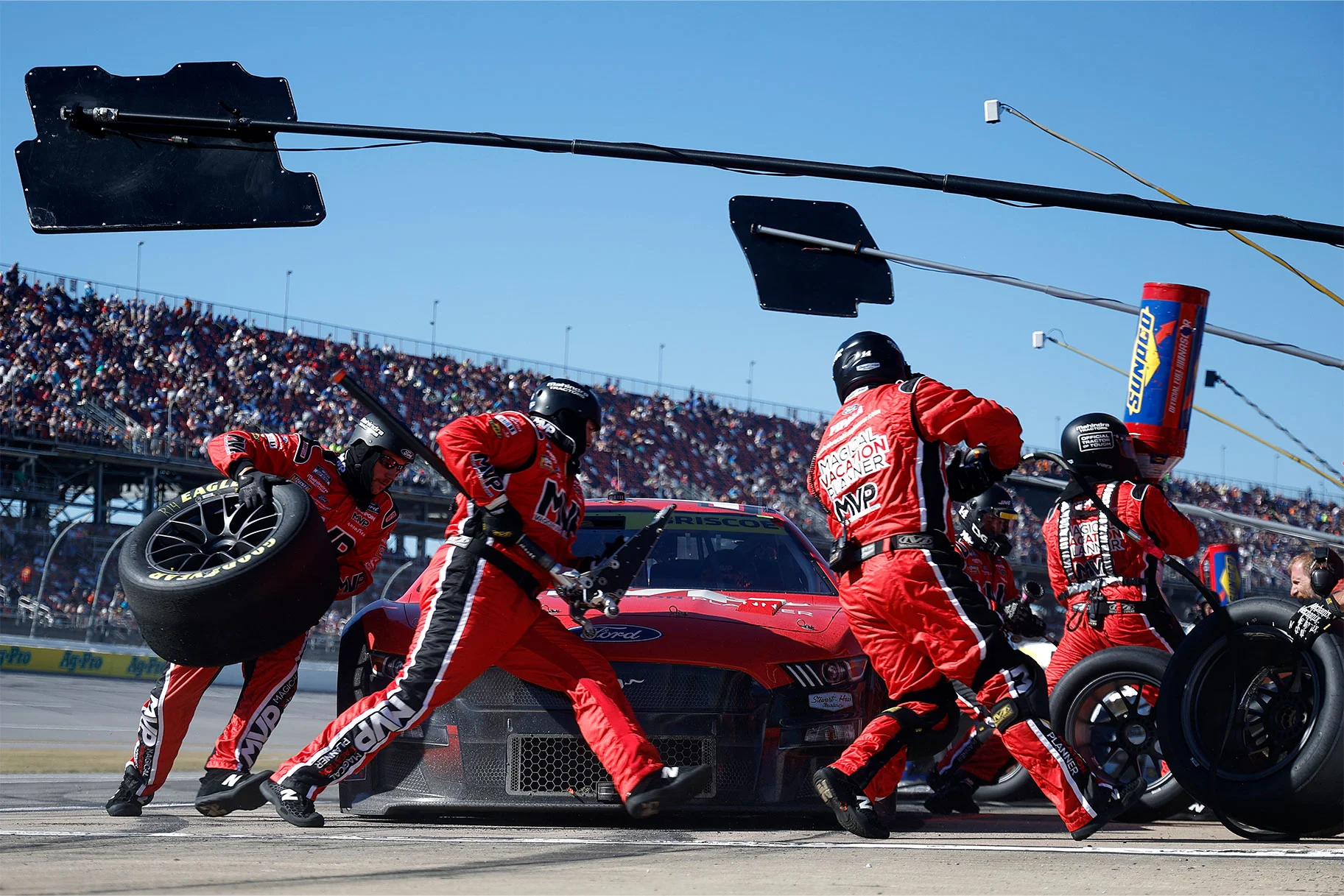The Accelerating Pace of NASCAR Pit Stops Fuels a Parallel Increase in Risk for Both Crews and Drivers
NASCAR pit stops are a spectacle of perfectly choreographed chaos. In a matter of seconds, a team of highly trained individuals swarm over a race car, changing tires, adding fuel, and making adjustments, all while the driver waits anxiously for the green light to rejoin the race. The speed and efficiency of these stops are crucial for success in NASCAR, often making the difference between victory and defeat. However, this relentless pursuit of speed has created a parallel increase in risk for both the pit crew and the drivers.
The Evolution of the Pit Stop: A Race Against Time
Over the decades, NASCAR pit stops have evolved from relatively leisurely affairs to lightning-fast ballets of human precision. In the early days of the sport, pit stops could last for minutes. Now, a top-tier team can complete a four-tire change and fuel the car in under 12 seconds. This dramatic reduction in time is a testament to advancements in equipment, training, and strategy.
Several factors have contributed to this acceleration. Specialized equipment, like impact wrenches and lightweight jacks, allows for faster execution. Teams invest heavily in training their pit crews, practicing pit stops repeatedly to develop muscle memory and flawless coordination. Furthermore, sophisticated data analysis helps teams optimize their pit stop strategies, from the placement of equipment to the precise movements of each crew member.
The Price of Speed: Increased Risk for Pit Crews
The relentless pressure to shave milliseconds off pit stop times has inevitably increased the risk for over-the-wall crew members. These individuals operate in an incredibly dangerous environment, mere inches from speeding cars and high-pressure equipment. The potential for injury is ever-present.
- Injuries from Equipment: Impact wrenches, air hoses, and jacks can cause serious injuries if mishandled or if a crew member is struck by them. The fast-paced nature of the stop increases the likelihood of mistakes and accidents.
- Collisions with Cars: Pit road is a crowded and chaotic place. Crew members are constantly at risk of being hit by a car entering or exiting its pit box, especially if a driver loses control or misjudges the approach.
- Slips, Trips, and Falls: Spilled fuel, loose equipment, and the general frenzy of a pit stop create a hazardous environment where slips, trips, and falls are common. These incidents can result in sprains, fractures, and other injuries.
- Burns: Fuel spills and the proximity to hot car components pose a burn risk to crew members, especially the fueler.
Driver Danger: Loss of Control and Pit Road Penalties
While the pit crew faces immediate physical dangers, drivers also experience increased risk due to the accelerated pace of pit stops.
- Loss of Control: Entering and exiting the pit box at high speeds requires precise car control. A momentary lapse in concentration or a mechanical issue can lead to a loss of control, potentially causing a collision with other cars or crew members.
- Pit Road Penalties: NASCAR imposes strict penalties for infractions on pit road, such as speeding, uncontrolled tires, or improper fueling procedures. The pressure to perform quickly can lead to mistakes that result in costly penalties, potentially jeopardizing a driver's race.
- Contact with Crew: Drivers must rely on their spotter and crew chief for guidance during pit stops. Miscommunication or a rushed exit can lead to contact with a crew member, putting both individuals at risk.
Balancing Speed and Safety: The Ongoing Challenge
NASCAR constantly grapples with the challenge of balancing the need for speed with the paramount importance of safety. The organization has implemented numerous safety measures over the years, including pit road speed limits, standardized pit equipment, and mandatory safety gear for crew members. However, as teams continue to push the boundaries of pit stop performance, the risk remains.
The Future of Pit Stops: Technology and Innovation
The future of NASCAR pit stops is likely to be shaped by technological advancements. Automated systems, such as robotic tire changers or automated fueling systems, could potentially reduce the risk to human crew members. However, these technologies also raise new challenges, such as the potential for malfunctions and the need for new skillsets among pit crew personnel.
The pursuit of speed in NASCAR pit stops is a relentless and thrilling aspect of the sport. However, it is essential to recognize the inherent risks involved for both crews and drivers. Finding the right balance between speed and safety will continue to be a critical challenge for NASCAR as it evolves in the years to come. Constant vigilance, technological innovation, and a commitment to safety protocols will be essential to ensuring that the excitement of pit stops doesn't come at an unacceptable cost.

